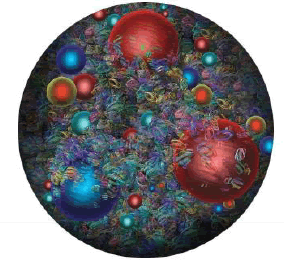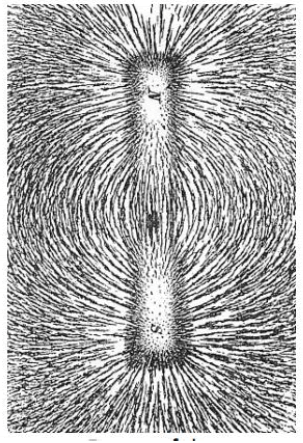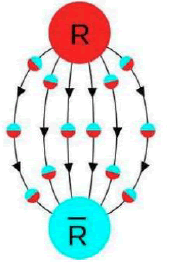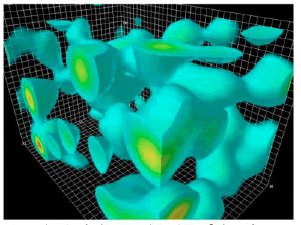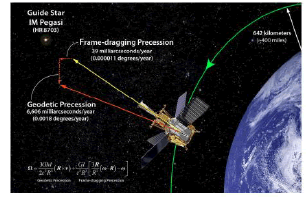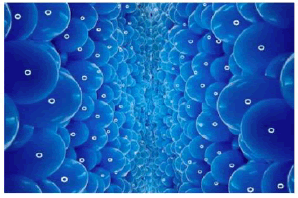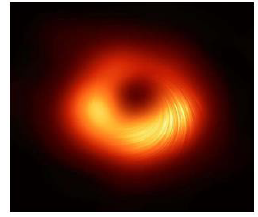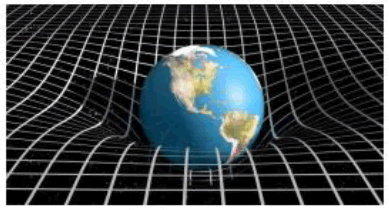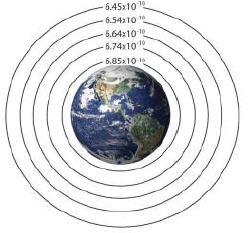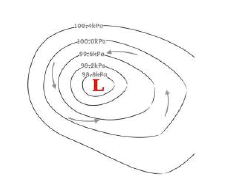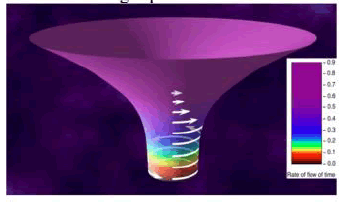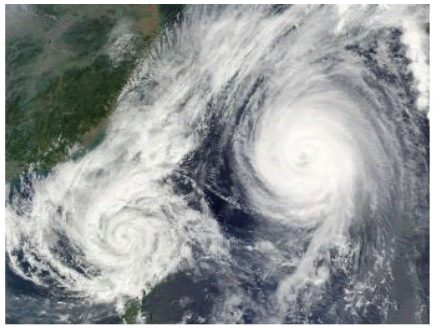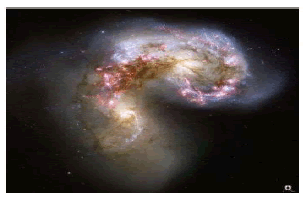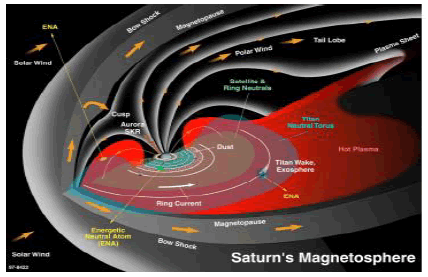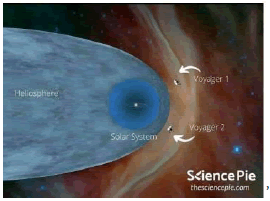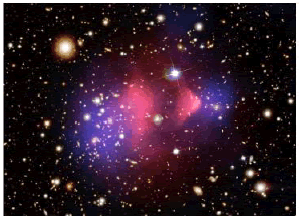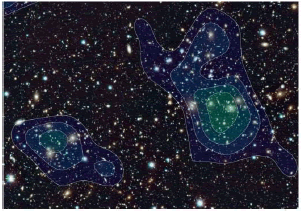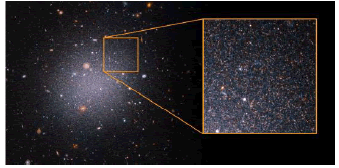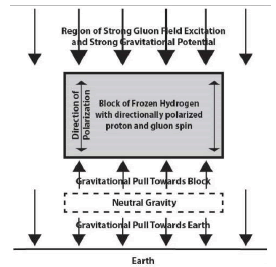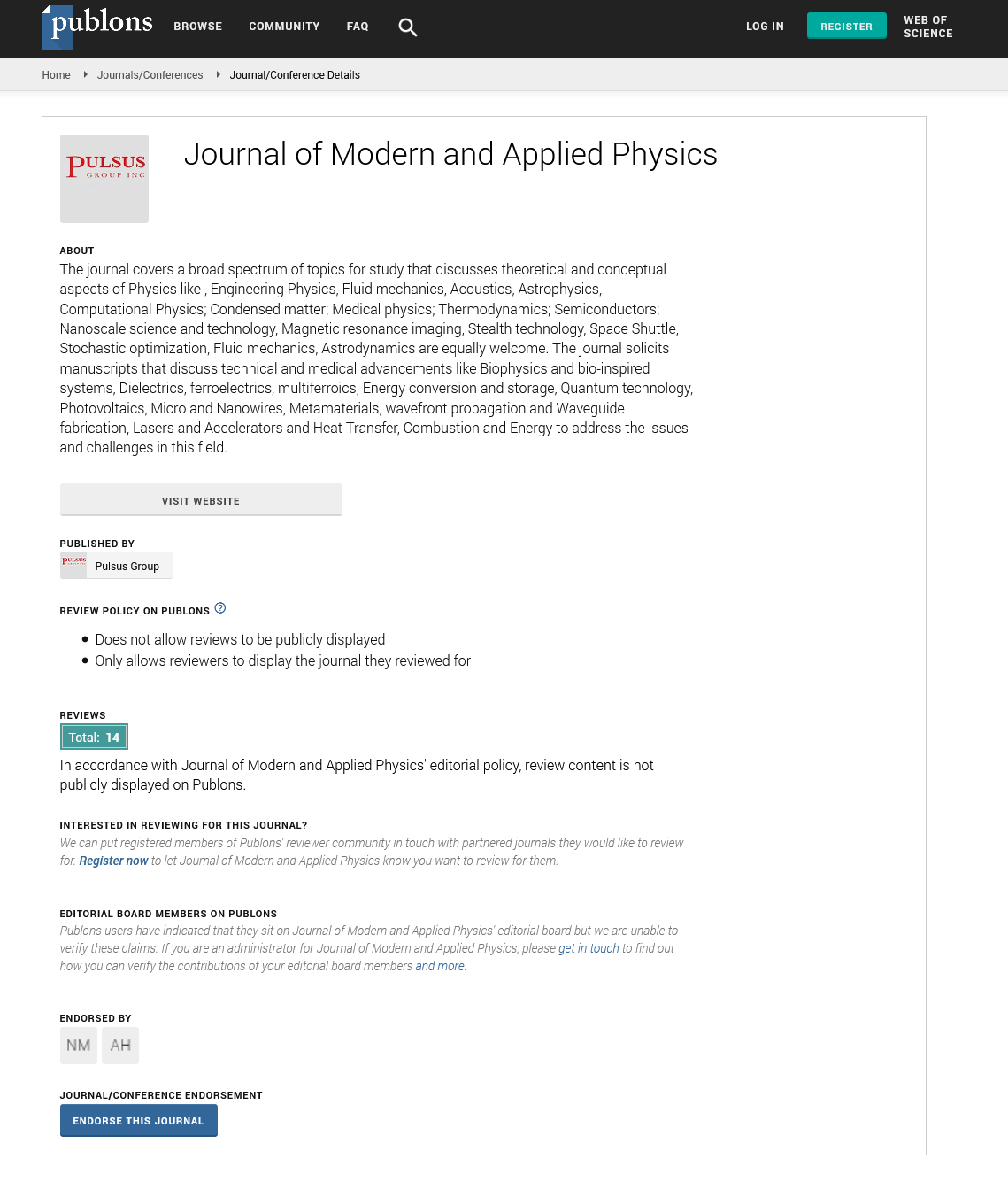Dilating Loop Relativity: An Examination of Gluon Field Excitation as the Initiating Cause of Time Dilation, Gravity and Dark Matter
Received: 14-Feb-2023, Manuscript No. puljmap-23-6164; Editor assigned: 16-Feb-2023, Pre QC No. puljmap-23-6164(PQ); Accepted Date: Feb 24, 2023; Reviewed: 18-Feb-2023 QC No. puljmap-23-6164(Q); Revised: 20-Feb-2023, Manuscript No. puljmap-23-6164(R); Published: 28-Feb-2023, DOI: 10.37532.2022.6.1.1-11
Citation: Evans A.B. Dilating loop relativity: An examination of gluon field excitation as the initiating cause of time dilation, gravity and dark matter. J Mod Appl Phys. 2022; 6(1):1-11.
This open-access article is distributed under the terms of the Creative Commons Attribution Non-Commercial License (CC BY-NC) (http://creativecommons.org/licenses/by-nc/4.0/), which permits reuse, distribution and reproduction of the article, provided that the original work is properly cited and the reuse is restricted to noncommercial purposes. For commercial reuse, contact reprints@pulsus.com
Abstract
Relying on known concepts of general relativity and quantum field theory, and using the Maxwell and Schwarzschild equations, this paper will investigate how charged gluon spin and subsequent excitation of the chromo electric field surrounding a gravitational mass result in the dilation of the particulate space of loop quantum gravity and the concurrent dilation of time; generally known as the warping of spacetime, which of course is gravity itself. This paper will also show that for any moving object the bow shock wave in the gluon field generates an analogous excitation of the field, leading to kinetic time dilation and a new definition of dark matter. Furthermore, this paper will show that the gravitational behavior of a warped spacetime model based on a weather low pressure system is more appropriate than the commonly envisioned bowling ball in a trampoline. Finally, this paper will present a method of testing and proving the theory using frozen hydrogen, polarized with respect to the internal gluon spin.
Key Words
Gluons, Quantum field theory, Gravity, Dark matter, General relativity, Special relativity, Time dilation
Introduction
Theoretical Physicist John Wheeler provided a perfect explanationfor the Einstein Equations when he said “Spacetime tells matter how to move, matter tells spacetime how to curve”[1]. Since Einstein, we have known that gravity is not caused by an attraction between two bodies but rather by the warping of spacetime caused by a single body. In our search for the underlying source of gravity we should be looking for energy, emitted by a body that results in this warping. This paper will provide a new explanation for the second half of Wheeler’s statement and propose that the energy embedded in the gluon field is the cause of spacetime curvature leading to gravitational and kinetic time dilation, gravity and dark matter.
Mass number
Mass number is the driving characteristic of gravity, i.e. the number of subatomic particles of the element in question. A planet made of lead has a higher mass number, a higher number of subatomic particles (quarks, gluons and electrons) and stronger gravity than a similar sized planet made of tin. It is not the size of the body that determines gravity; it is only the number of subatomic particles inside that body. Solomon made the statement that “mass is only a proxy for the amount of matter” [2]. All matter, regardless of size or density, gives rise to time dilation based on mass. For example the planet Earth has gravity. And if the Earth was blown to dust stretching across our solar system, it would still have the exact same level of gravity to distant observer [3].
The protons and neutrons that make up matter are themselves composed of elementary quarks and gluons Figure 1. There are three valence quarks connected by gluons inside each nucleon, but there are also a very large number of “sea” quarks and gluons that continuously pop in and out of existence.
Why gluons? Quarks have mass and radiate a limited field. Gluons are massless exchange particles (vector gauge bosons with spin 1) for the strong force between quarks, analogous to the exchange of photons in the electromagnetic force between charged particles [4].
Although gluons are massless, they account for more than 99% of the total mass of the nucleon through mass/energy equivalence and provide the most energetic possible gluon field [5].
Quantum Field Theory (QFT)
QFT tells us that space is not empty. It is filled with the quark and gluon fields of Quantum Chromodynamics (QCD), the quantum field theory of the strong interactions governing the structure of subatomic matter. Contrary to the concept of an empty vacuum, QCD induces chromoelectric and chromomagnetic fields throughout spacetime. It's reminiscent of the magnetic field that appears around a bar magnet in its lowest energy state [6].
Subatomic particles such as electrons and gluons have the property of spin or angular momentum that can be described as a moving charge. Fields that pervade all of space are “excited” by this moving charge. For example a standard bar magnet Figure 2 functions because the composite atoms are aligned so all the internal free electrons are polarized to spin in the same direction to generate an excitation of the magnetic field, made up of virtual photons as the exchange particles for the electromagnetic interaction. In quantum field theory, virtual particles are viewed as excitations of the underlying field but appear only as forces – not as detectable particles [7]. Each individual atom in the universe is itself a tiny magnet with spin generating a tiny electric charge, but because each is spinning in random directions, the force is too small to be noticed [8]. We understand from the principles of diamagnetism that all objects from a block of wood to a living frog contain spinning electrons, therefore all objects have a magnetic moment in a magnetic field [9]. There is no reason to believe that spinning gluons would behave differently in the gluon field Figure 3.
We propose that in the same manner that photons, the exchange particles of the EM field, are responsible for the excitation of the magnetic field, gluons, and the exchange particles of the quark field, are responsible for an excitation of the gluon field surrounding any gravitational mass. Gluons carry a color charge, analogous to the negative electrical charge carried by an electron. The spin of a gluon carries this color charge out into space surrounding a gravitational body. It is this charge, combined with the charge emanating from the gluons in the other 1050 atoms in a typical planet that generates the field excitation necessary to dilate particulate space and time.
The gluon field for color charge has a time-like component analogous to the electric potential or the amount of energy required to move a unit of charge from a reference point to a specific point in the electric field [10, 11]. The gluon field is very similar to the electromagnetic field with the difference that, unlike the photons of electromagnetism, gluons carry charge and therefore interact with each other as well as with quarks [12]. Each gluon field also has three space-like components, analogous to magnetic vector potential that can be used to specify the electric field [13]. Thus the gluon field Figure 4 is a four-vector field that plays the same role in quantum chromodynamics as the electro-magnetic four-potential in quantum electrodynamics.
Robert Kunzig said, “Like the photon that transmits the electromagnetic force, a gluon is massless. But unlike the photon, a gluon is charged. It generates its own color field, exerts its own strong force and interacts with other gluons. The color field, like the electromagnetic one, can be thought of as having two components, call them color electric and color magnetic. A fast-moving color charge (gluons move at c) generates a strong color magnetic field. Gluons are like little dipole magnets. The gluons that surround a quark align themselves parallel to its color field, they strengthen it. They antiscreen the quark, amplifying its field”[14].
Likewise, Dr. Dan Hooper said “The symmetry of this theory describes the strong nuclear force in the same way that the symmetry of electromagnetic theory describes that force. So we begin to see an overarching pattern emerge about the way these forces are manifest in nature… We call these gauge bosons. The photon is the gauge boson associated with the electromagnetic force. The gluon is the gauge boson that communicates the strong nuclear force. Gluons are travelling back and forth through space communicating the strong nuclear force. Just like photons communicate the electromagnetic force” [15].
This falls squarely into the theories of Gravito Electro Magnetism, (GEM) the set of analogies that allows us to make direct mathematical comparisons between Maxwell’s equations for electromagnetism and the Einstein field equations for relativistic gravitation [16]. The Gravity Probe B experiment Figure 5 was strong evidence of the existence of a field surrounding Earth, and the concept of charged gluons generating this field becomes evident [17]. According to GR, the gravitational field produced by a rotating planet can be described by equations with the same form as electromagnetism.” That is, a magnet with polarized electron spin moving within a coil induces electric current. Bini et. al. confirmed the same principle holds for gravity; “we find that a special nonstationary metric in GEM can be employed to show explicitly that it is possible to introduce gravitational induction within GEM in close analogy with Faraday’s law of induction and Lenz’s law in electrodynamics” [18].
We can state that a planet, with gluon spin, induces frame dragging in the gluon field surrounding the planet. We see that analogous to the magnetic field surrounding a bar magnet, there also exists a charged gluon field surrounding a planet or any other gravitational body. It is the movement of charged gluons, residing inside the protons and neutrons of the mass that generate this charged field.
Introducing loop quantum gravity
The question becomes, exactly how does this excitation of the gluon field result in gravity? I propose that this answer lies in particulate space and the theory of loop quantum gravity. In this theory space is made up of particles or loops, with each being extremely small, on theorder of 10 m to 35 m. Physicist Carlo Rovelli, leading research in loop quantum gravity, noted, “The physics of quantum gravity is the physics of the quantum fields that build up spacetime. A region of space can be described by a set of interconnected grains of space. The length of these links is determined by the field itself because geometry is determined by gravity” [19].
“What photons are for the electromagnetic field; we think there should be analogous quanta for the gravitational field. Since the gravitational field does not live in spacetime but is spacetime itself, the quanta do not live in spacetime; they are themselves spacetime. The quanta of gravity in loop quantum gravity are the grains out of which space, or the gravitational field, is built. The pixel granular structure is right there at the beginning” [20].
Likewise, physicist Jim Baggott noted “Loop quantum gravity suggested that at the Planck scale, space is discrete, composed of individual units or quanta – the loops themselves. These represent the building blocks of space, which is formed from a weave, but more like chain mail produced by linking individual loops of steel than linen produced by weaving continuous threads. This kind of model suggests that space cannot be continuously variable. At the Planck scale, there must be some kind of ultimate area or volume which cannot be transcended. There can be no area smaller than the smallest area; no volume smaller than the smallest volume” [21]. A different concept of this general idea describes the particles as twodimensional triangles in a cloud of quantum fuzziness [22].
Permeability and Permittivity
What I have done with the present hypothesis is to reverse the chicken and the egg from these concepts. It occurred to me that in a different universe, if the size of a space particle was larger or smaller, then the speed of light would itself be slower or faster Figure 6. This works directly in conjunction with Maxwell’s equations with That is, c is inversely proportional to the permeability and permittivity of free space. In this formula, É?0 (8.8542 x 10-12) is the permittivity of free space. This can be thought of as the resistance of free space to the formation of fields, or the viscosity of space.
That is, c is inversely proportional to the permeability and permittivity of free space. In this formula, É?0 (8.8542 x 10-12) is the permittivity of free space. This can be thought of as the resistance of free space to the formation of fields, or the viscosity of space.
Paraphrasing from Arvin Ash; why are μ0 and É?0 these exact values? These are the constants of nature. These are properties of free space that tell us how fast magnetic fields and electric fields can interact with each other. This sets a limit on how fast these fields can propagate through space. In a different substance, or in a different universe, these constants could be different [23].
Image description: The particulate space of loop quantum gravity has been described as 2-dimensional triangles, tetrahedral or as links in chainmail. I find it easier to visualize balloons that expand with the addition of energy near a gravitational body. This becomes the warping of space. Each balloon contains a node. Light travels from node to node in quantum jumps, taking a longer pause between each jump as the distance between nodes expands. This becomes the definition of time dilation and together we arrive at the warping of spacetime as defined in general relativity.
Of course these particles are not solids; rather are clouds of quantum fuzziness. We can surmise that if É?0, the permittivity of space was lower, c would increase. Likewise if É?0 was larger, as with the dilation of particulate space, c would decrease as we see with time dilation in gravity. Paraphrasing from Review of the Universe, “Just as space is defined by a network's discrete geometry, time is defined by the sequence of distinct moves that rearrange the network. Time flows not like a river but like the ticking of a clock, with "ticks" that are about as long as the Planck time: 10 sec to 43 sec. Or, more precisely, time in the universe flows by the ticking of innumerable clocks in a sense, at every location in the network where a quantum "move" takes place, a clock at that location has ticked once” [24].
To show approximations on how this works in a gravitational field, we compare the permittivity of free space against the permittivity of space on the surface of the gravitational body:
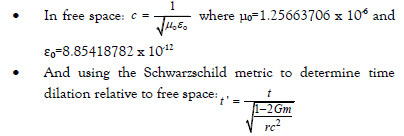
On the Earth: Mass=5.9722×1024kg Radius=6.371×106m
We find a time dilation factor of tE=1.000,000,000,699,68 c×tE – c = 0.21.
We find a permittivity factor of É?E = É?0×tE=8.85418783×10-12 or a difference of 21 centimeters per second in the relative speed of light versus free space.
On the Sun: Mass=1.989×1030kg Radius=6.9634×108m
We find a time dilation factor of tS =1.000,002,121,041,69 c×tS – c = 636
We find a permittivity factor of É?S = É?0×tS=8.85420660×10-12 or a difference of 636 metres per second in the relative speed of light versus free space.
On star R136a1(The largest known star): Mass=6.263×1032kg
Radius=2.089×1010m
We find a time dilation factor of tR =1.000,022,265,004,83 c×tR – c = 6675
We find a permittivity factor of É?R = É?0×tR=8.85438498×10-12 or a difference of 6,675 metres per second in the relative speed of light versus free space.
From these we see the small distortion of spacetime surrounding Earth when compared to the larger distortion around the Sun and much large distortion surrounding star R136a1.
Of course we must not think of particles of space as hard physical objects, like grains of sand, in the same way that we must not think of an electron as a tiny moon orbiting a nucleus planet. For descriptive purposes, the nature of this has been imagined as a connection of rings like chainmail; or as a foam like soap bubbles, or as nodes like rocks in a stream, or as 2-dimensional triangles or three dimensional tetrahedral. Any particle is nothing more than a vibration or an excitation of the underlying field. Particulate space, as defined in loop quantum gravity, is not in space but rather is that underlying field.
Dr. Don Lincoln from Fermilab said “When you add mass and energy, you can distort the shape of the little volumes of quantum space. Bending space and time has a property that you can distort the local definition of space” [25]. Likewise Arvin Ash noted “How do particles traverse this quantized space? When mass and energy are added to the spin foam the shape of the volumes of the spin network is distorted. This distorts space and time.This distortion of space and time is what we perceive as gravity” [26].
We are left to surmise that the added energy of the gluon field surrounding a gravitational body causes a dilation, or swelling, of particulate space and subsequent time dilation. This becomes a clear definition of the warping of spacetime (and an understanding of the second half of Wheeler’s statement) as used throughout relativity; it defines exactly how matter tells spacetime how to curve.
In a different way to envision this process in loop quantum gravity, we can speak of a photon traveling along a path of nodes in space like a man walking across scattered rocks in a river.
These nodes define the quantum nature of space in that a photon can only move instantly from node to node but can never be found in between two nodes. The travel time from node to node is defined as the minimum possible tick of the quantum clock, i.e. 1 Planck time. If, near a planet, space is dilated by an excitation of the gluon field, then the distance between these nodes is increased and it takes longer (in relative terms) for a photon to cross that difference. But the travel period remains defined as 1 Planck time. Referring to Carlo Rovelli, “The central physical result obtained from loop quantum gravity is the evidence for a physical quantum discreteness of space at the Planck scale” [27].
Why is time dilation a reasonable cause of gravity?
The answer is based on the third law of thermodynamics that all matter tends towards entropy. As an interpretation of this, we can say that in order to increase entropy, all matter wants to give up potential energy.
In his famous lecture, Nobel Lauriat Kip Thorne referred to what he calls “Einstein’s Law of Time Warps”. He said, “Things like to live where they are the most slowly. Gravity pulls them there. And so as an application, the Earth's mass warps time according to Einstein. It slows time near the surface of the Earth. And this time warp is what produces gravity” [28]. This might also be related to the principle of least action, whereby any moving object will take the route that requires the least energy.
Thorn showed that mathematically the amount of time dilation required to produce the gravity we see on earth versus a height of 10,000 km is one second per century. Recently, a rocket containing atomic clocks was sent to 10,000 km and verified this estimate with great precision. The tie between time dilation and gravitational potential is confirmed.
This testing also shows why gravity is such a weak force on Earth. It is the rate of time dilation that gives rise to the force. Time dilation of only 1 second per century over a distance of 10,000 km is very small. Near the sun, time dilation is greater and gravity is greater, and much greater still near a very large star, where the force of gravity is much stronger.
Gravitons, the gravitational field and gravitational waves
In this paper the excitation of the gluon field or virtual gluon as it were, takes its place as the long theorized “graviton” emitted by a gravitational body. Likewise the “gravitational field” becomes defined as the gluon field lay on top of or in combination with the spacetime backdrop of loop quantum gravity. This helps to clarify gravitational waves [29]. The collision of two black holes would inevitably generate a significant wave in the gluon field. This wave would propagate across space, leading to a momentary expansion of particulate space as it passes.
Sebens refers to the field-theoretic approach to general relativity in which the background spacetime is unobservable, but makes gravity more closely resemble other fields that appear in particle physics and serves as a useful framework for developing a theory of quantum gravity [30].
Gluons and gravity in the big bang period
A recent study from the University of Copenhagen has investigated the state of the universe in the shortest possible time after the big bang [31]. They determined that the universe was made up solely of quark-gluon plasma during the first 0.000001 sec of the big bang. Associate Professor You Zhou stated “We have studied a substance called quark-gluon plasma that was the only matter during the first microsecond of the Big Bang.” It was only later that hadrons were formed by the combination of quarks and gluons.
It is also known that gravity predates matter. Jacob Brun noted: “It is at this stage after 10 sec to 43 sec that the effects of gravitational interactions become distinguishable from electronuclear interactions and have a describable effect on spacetime. Interestingly enough, gravitation existed before matter did, and therefore, before mass. As what actually manipulates space-time is energy and its propagation through space. It is only when the strong force became distinguishable from the electroweak that we started seeing objects that could be described as “particles,” and eventually matter, once electromagnetism separated from weak interaction” [32].
Thus we have confirmation that the only possible initiating source of time dilation and gravity must be either quarks or gluons and, as discussed above, gluons become the logical option.
Black Holes offer a special situation but with the same cause and effect. Understanding the Pauli Exclusion Principle, we realize that two or more fermions (1/2 spin particles such as quarks or electrons) cannot simultaneously occupy the same quantum state within a quantum system [33].
“The fact that electrons are fermions is what keeps white dwarf stars from collapsing under their own gravity; the fact that neutrons are fermions prevents neutron stars from collapsing further. The Pauli exclusion principle responsible for atomic structure is responsible for keeping the densest physical objects of all from becoming black holes.”[34] As a star collapses, these particles must transform into energy that exits the rapidly forming black hole. This agrees with physicist John Wheeler (who coined the term Black Hole) who believed an imploding star converts its nucleons (protons and neutrons) into radiation during black hole formation [35].
However, bosons (spin 1 particles such as gluons) can occupy the same quantum state without limit. Therefore, when a star collapses, all that remains of the original star are the gluons, compacted down into a singularity. Analogous to the example of the Earth being blown to dust, to a distant observer a black hole has the same level of gravity as the original star. Gluons are neither added nor subtracted during the collapse. We can arrive at a new definition of a black hole – a star’s worth of gluons captured in a singularity.
Further evidence of the gluon field theory was confirmed with the discovery of polarized light surrounding a black hole, indicative of strong magnetic fields Figure 7 [36]. Although nothing can escape a black hole, the black hole can generate a very strong surrounding field such as an electromagnetic field or the strong gluon field proposed herein.
How does the proposed excitation of the gluon field escape from a black hole? Paraphrasing from Dr. Matt O’Dowd will provide the complete explanation [37]. “Virtual particles do not really travel from one location to another carrying force with them; they are not localized in that manner. If two electrons travel close to each other, they interact by the exchange of a virtual photon, or more preciously they exchange the sum of all possible virtual photons. Those photons don’t follow a well-defined path between the electrons; they emerge from the electromagnetic field in the broader region occupied by both electrons.” In the case of a black hole, gluon field excitation does not emerge from the singularity, and this force doesn’t have to travel through the event horizon. The field surrounding the black hole is already “abuzz” with the virtual particles, whether that be the photons of the image above or gluons of this thesis.
Kip Thorne has provided more evidence of the present theory in his book Black Holes and Time Warps [38]. In describing a black hole, “Quantum gravity then radically changes the character of spacetime. It ruptures the unification of space and time. It unglues space and time from each other, and then destroys time as a concept and destroys the definiteness of space. Time ceases to exist; no longer can we say that “this thing happens before that one,” because without time, there is no concept of before or after. Space, the sole remaining remnant of what was once a unified spacetime, becomes a random, probabilistic froth, like soapsuds.”
This would be an apt description of a black hole in the present theory. Inside the event horizon, time has stopped; particulate space has dilated to the extent that light can no longer cross between nodes. However, there is no reason why particulate space would not continue to dilate all the way down to the centre of the black hole. Time and space have separated, exactly as Thorne described.
This description of a black hole provides further evidence of the general theory of this paper, that gluon color charge and spin are the initiating cause of gravity. Since there is nothing else remaining inside a black hole singularity, we are left with the sole choice of gluons.
Gravity as a low-pressure system
The first half of Wheeler’s statement; “Spacetime tells matter how to move,” also requires an explanation. One might ask, why do objects always fall in one direction in curved spacetime, or why don’t objects fall up? The answer comes when we realize that gravity works exactly like a weather low pressure system rather than the frequently used bowling ball in a trampoline model of warped spacetime Figure 8. In a low-pressure system, wind circulates around and towards the centre of the low Figure 9, 10. This could be referred to as frame dragging. If the wind travelled at c, it would not move in a circular way, but would simply travel straight into the centre. Since the Earth rotates at a high speed relative to wind speed, the wind must move towards the centre in a spiral fashion. Einstein proposed that the warping of spacetime is the cause of gravity. This low-pressure system model is simply a clearer definition of what physicists refer to as the geodesic in spacetime, as mathematically described with the Einstein Field Equations

It has been shown with Gravity Probe B that gyroscopes in a satellite in Earth orbit move in a similar manner. They do not simply point down straight at the Earth’s surface. Rather they are tilted slightly, reflecting that the rotation of the Earth is causing a slight dragging of space. Likewise a rapidly spinning black hole will drag space in a tight spiral. Physicists refer to this as Frame Dragging Figure 11).
In a further similarity between gravity and a weather low pressure system, the Fujiwhara Effect describes when two tropical cyclones rotate around a common center of mass and merge Figure 12. This is the same effect seen when two galaxies merge Figure 13.
Low pressure systems in weather are spawned when air is heated by warmth from the land, water or by direct sunlight; i.e. they are caused by energy. Likewise a low pressure system of time in the present theory originates from the energy embedded in the gluon field surrounding a gravitational mass.
In yet another similarity between gravity and a weather low pressure system, we can look to a simple balloon on a string. If the balloon is carried from a high pressure to a low-pressure region, the balloon will expand such that the relative pressure between inside and outside the balloon remains constant. Likewise, if a clock is dropped from height, the time measured on that clock will itself dilate, in exact proportion to the time in space surrounding the clock.
We know that all objects, from a feather to an anvil, fall at the same speed and acceleration in a vacuum due to gravity. For a normal situation on a planet or star, this is because of the density of time through which they are falling. As an analogy, imagine three pieces of cork: 1 kg, 10 kg and 100 kg and each is shaped so that they have the same resistance when dragged through water. Now imagine that we pull each piece under water so their centre of buoyance is at a depth of 100 m. In exactly the same way as lifting the 10 kg and 100 kg corks up in the air would be more difficult than lifting the 1 kg cork, pulling the larger corks down under water would be more difficult than pulling the smaller cork.
If the corks are released simultaneously, they would all rise to the surface with the same acceleration of 39.2 m/s2. The only real resistance faced by the rising corks is the pressure of the water, which rapidly diminishes as the corks rise. All three corks will hit the surface at the same instant, exactly as if they had fallen from the sky. The buoyancy is due to the pressure above and below the cork. That is, the pressure of the water pushing down from above is lower than the pressure pushing up from below, so it rises.
We can pose the issue that although the three corks have different mass, they all have the same density relative to water and a different floating object will have a different relative density. Luckily, we can say the same about all matter when compared to spacetime; all matter, be it anvil or feather, have the same density when compared to time, i.e. c.
We can imagine a race of people living under the sea. They would see gravity where rocks fall to the sea floor with equal acceleration and analogous anti-gravity where corks rise to the surface in with equal acceleration Figure 14 [39,40]. In both cases, it is not the characteristics of the rock or cork that establishes the gravitational or anti-gravitational acceleration. It is the pressure of the medium above and below the rock or cork that creates the acceleration rate. I.e. it is the pressure of time above and below that establishes the rate for the falling rock and the pressure of water above and below that establishes the rate for the rising cork. The actual falling object has no importance in the process of the fall.
And through all of this we know that it is only the pressure that causes a buoyant object to rise. On the International Space Station, a bubble of air will remain trapped inside a surrounding sphere of water because the water pressure is constant in all directions.
Some have proposed that the reason an object falls to Earth is because the high side of the object is running at faster time than the low side of the object, causing the object to curve downwards in its pathway through spacetime [41]. This view is significantly misleading in that it assumes that only the object is subject to time dilation and not the space surrounding it. In fact time dilation within the falling object is irrelevant. Space itself is subject to time dilation and it is the gradient of time, in space that is why an object falls. An object falls because the space below it has lower time pressure than the space above it. As a further counter-example, light itself falls at exactly the same rate as an anvil or a feather, but light does not experience time. It cannot be said that the high side of the light is experiencing time at a faster rate than the low side. The gradient of time in the space above and below the light is the reason it falls.
The examples given above are very significant evidence of the similarity of time dilation/gravity to any other type of low-pressure system. If natural phenomena have very similar characteristics, it makes most sense to consider that they work in the same manner. It is proposed that gravity caused by time dilation works in the same manner as a weather low pressure system. This does not detract from the warped spacetime concept of Einstein; it merely indicates that the low-pressure system is a better model than the bowling ball in a trampoline. At the same time, it does corroborate the idea that it is the relative density of time that becomes the cause of gravity.
Unification of gravitational and kinetic time dilation
From the discussion above, we are led to understand that gravitational time dilation is caused by the energization of the gluon field near a gravitational body. Let us now look at kinetic time dilation from objects moving in space. We know from Einstein that as objects move faster, they experience time dilation with the formula:

Δt = observer time (for example the time on Earth)
Δt0 = proper time (the time inside a fast moving rocket ship)
v = velocity in m/s (velocity of the rocket ship, relative to the Earth)
c = speed of light
Key to understanding the present theory of kinetic time dilation is that if a relativistic rocket passes very close to a clock on Earth, for the instant that the rocket was passing, the clock would tick slower, matching the time dilation of the rocket itself. This indicates that it is not merely the fast moving object that experiences time dilation, but the region of space surrounding it as well.
If we look at the analogy of a ship traveling in the water; the ship will create a bow wave Figure 15. This type of wave is true for any object moving through any liquid medium. It is just as true for a ship on the water, a jet in the air or a planet or galaxy moving through space Figure 16,17. They showed that the electromagnetic field behaves as an incompressible and irrotational, viscous fluid [42-44]. Likewise Charles Sebens wrote, “My primary goal in this article is to argue that Newton’s third law holds in the special relativistic theory of electromagnetism because the force from the electromagnetic field on matter is balanced by an equal and opposite force from matter on the field” [45]. Sebens goes on at length to show that the electromagnetic (and any other) field has mass, velocity, momentum and behaves with all the characteristics of a fluid.
From this we can determine that any moving object will generate a three-dimensional bow wave in the quantum field. This could be a rocket ship, a planet, solar system or galaxy. The faster and the larger that the object is moving in space, the larger will be the amplitude of the bow wave, leading to an energization of the field analogous to that created by the gluons inside a gravitational body, and hence to the subsequent dilation of particulate space and time dilation. There is no difference between the primary causes of kinetic or gravitational time dilation. They are both caused directly by an excitation of the gluon field. Only the origin of that excitation differs is different.
Of note is that in exactly the same way as it is impossible for any object with mass to reach c, it is impossible for a displacement ship travelling through the water to climb up and over its own bow wave (unless it moves up on plane and is no longer in the water medium.) This is known as the hull speed. As a ship moves faster it will build a higher and steeper bow wave, using an exponentially greater amount energy to travel slightly faster but never able to exceed its hull speed. This is analogous to a rocket moving faster through space when the bow wave becomes higher and steeper. It requires more and more energy for the rocket to continue accelerating, until the bow wave is vertical at c and further acceleration becomes impossible. We can see how time dilation, velocity and the bow wave are all related.
Incorporating relativity
A key aspect of loop quantum gravity theory flows directly from the general relativity concept that spacetime is background independent. Some might think that this theory of kinetic time dilation incorporates the discredited idea of a luminiferous aether. However, we know that the electromagnetic field (and presumably the gluon field) is background dependent [46]. This would explain the results of the Michelson-Morley experiment that showed the absence of a luminiferous aether by measuring the speed of light in perpendicular directions [47]. Under the present concept, the speed of light is determined only by the spacetime on which it travels, i.e. the particulate space of loop quantum gravity. Light does not travel along or interact with the gluon field which is background dependent. It is only physical matter containing gluons that would interact with the gluon field and it is only these objects that experience kinetic time dilation as described.
This concept is proven every day with fast moving GPS satellites. We know that GPS clock time runs 7 microseconds per day slower than Earth time due to kinetic time dilation [48]. Other satellites (or intercontinental ballistic missiles) that use the GPS system for navigation might be following close behind the GPS satellite so would have no relative velocity, or they might be travelling in the opposite orbit so would have a very high relative velocity, or at any other angle to the GPS satellite so might have any other relative velocity. Under standard special relativity thinking, these satellites would have their internal clocks set with reference to the GPS clocks. But this in not done. Rather, they have their clocks set with reference to Earth time [49]. This shows that for physical objects originating on Earth, there is indeed a preferred reference frame.
In the past, physicists have provided curious explanations for the Twin Paradox in which a twin who rockets to another planet and returns is younger than the stationary twin. Under the standard interpretation of special relativity, all motion is relative so each twin would say that it was the other twin who was moving and therefore should be younger. But extensive testing (using clocks – not twins) has proven that it is only the rocket twin who is younger. There has never been a test showing the stationary twin as younger. Two popular, but erroneous, explanations are that the rocket twin “turned around” to return, or the rocket twin “experienced acceleration” in both directions during the trip.
What we know about this situation is described perfectly with the current theory. If twins take different routes from point A to point B in the same time, with one route being longer than the other, then clearly the longer route twin has travelled at a greater velocity, creating more of a bow wave in the gluon field and thereby generating more time dilation as described.
Acceleration and turning around does not play any role in this calculation. It is simply a matter of velocity through the gluon field.
Dark matter
Dark matter is said to be unseeable matter that gives gravitational pull on the surrounding space. Strong evidence of its existence was given with observations of the Bullet Cluster Figure 18, in which two clusters of galaxies with a total mass of 2.5×1014 solar masses are passing through each other at an incredible 10 million kilometers per hour (about 1% of c), with gas temperatures of 100 million degrees and creating a massive bow shock wave. (NASA is well aware of the bow shock wave generated by the Bullet Cluster [50].)
We understand that the physical body of the stars is only a minor contributor to this shock wave. Of much greater importance is the collective solar wind radiating at an additional 1.4 million kilometers per hour from all of the 2.5 x 1014 stars in the cluster. This is a well-studied phenomenon with the 2018 Magnetospheric Multiscale (MMS) spacecraft experiments [51]. “The quasi-perpendicular forward shock that MMS observed is characterized by an extremely sharp ramp in the interplanetary magnetic field magnitude, the arrival of the shock-heated plasma downstream of the ramp, jumps in flow speed and density, significant electric field fluctuations, and intense electromagnetic wave activity.” These interplanetary shock waves are a type of collision less shock where particles transfer energy through electromagnetic fields instead of bouncing into one another.
In quantum field theory even a quantum field in the vacuum state (Lowest energy or ground state) with no particles can become polarized if bombarded by charged particles. Ethan Siegal noted, “This doesn’t mean that empty space is full of particles, but rather that you have quantum mechanical operators, including the “particle creation” and “particle annihilation” operators, acting on the quantum state continuously. This phenomenon does have real, observable effects. One of them is known as vacuum birefringence: the notion that a strong, external field can cause this type of polarization – the creation of an internal field – to empty space itself” [52]. Of course the solar wind from every star is a constant stream of charged particles which would have the effect of polarizing the gluon field caught within the bow wave of the moving galaxies. Analogous to how polarization of electron spin generates a stronger magnetic field, this polarization of the gluon field originating with the charged particles of solar wind creates a much more energetic gluon field than if just the physical stars were responsible for the bow wave and has a much larger impact on the dilation of particulate space and the subsequent dilation of time, and gravity. This is the reason why dark matter is such a strong force but remains invisible.
If we look at the bow wave concept above, we see that any object moving at a high speed will cause a bow wave and energization of the gluon field, then dilation of particulate space leading to time dilation and gravity. Hooft took this concept even further when he made the statement “Absence of matter no longer guarantees local flatness” [53]. Moffat & Toth, in their Modified Theory of Gravity, postulated a “massive vector field” and a coupling constant that measures the coupling strength between that field and normal matter [54]. Charles Sebens noted “By mass energy equivalence (E=mc2) the gravitational field has a relativistic mass density proportional to its energy density.” And he concludes “In general relativity, the gravitational field appears to act as a source for itself.”
The bow wave concept agrees with these ideas and puts forth that it is only an excited gluon field that is required for time dilation and gravity. Galaxies generally reside at the centers of vast clumps of dark matter called haloes. A recent study published in the Royal Astronomical Society monthly newsletter examined dark matter gravitational lensing surrounding 3200 galaxies Figure 19 [56]. It found that massive galaxies have more massive dark matter haloes. A similar study found “a clear connection between the distribution of stars within massive galaxies and halo mass. At fixed total stellar mass, massive galaxies with more extended mass distributions tend to live in more massive dark matter haloes” [57]. The similarities between dark matter and the bow wave of a ship on the ocean are striking. Would the heliosphere of each star along with the massive amount of matter and gas in the Bullet Cluster, moving at this incredible speed, be sufficient to create the bow wave that generates the measured gravitational effect?
Further evidence is provided by 2021 studies on the Ultra Diffuse Galaxies NGC1052-DF2 [58] Figure 20 and AGC 114905 [59] which found a lack of dark matter. These galaxies are the same size but with only 1% the mass of the Milky Way. It is logical that such a galaxy would generate a much smaller bow wave (or no bow wave at all) compared to galaxy with greater density. A group of row boats would not generate the same bow wave as an aircraft carrier.
More evidence for this concept of dark matter as nothing other than a wave in the gluon field is provided with the fact that dark matter cannot come together to form a planet, a star or a black hole [60]. Normal matter experiences electromagnetic interactions; dark matter does not. Also dark matter has no collisions, no friction, experiences no heating and no way to exchange energy or momentum with other particles – either normal or dark particles – that exist within a galaxy. Normal matter sheds linear momentum and angular momentum and sinks to the core of a galaxy where it forms individual, dense small-scale clumps. Whereas dark matter always remains diffusely distributed in an enormous halo around the galaxy – unable to shed linear or angular momentum. Without a mechanism to shed angular momentum, dark matter can never even approach the densities necessary to create an event horizon or black hole.
Still more evidence is provided in a 2022 study by Moreno et. al. in which they identify that small galaxies which have passed through larger galaxies often have lost their dark matter halo [61]. It is apparent that the solar wind preceding these small galaxies, which is the source of gluon field polarization under the present theory, would be stripped away by the gravitational attraction of the larger galaxies.
Measurement, testing and proof
It is known that a quantum field cannot be measured in itself. Nor is it possible to measure the wave function of an individual quantum particle. It is only possible to measure the interaction between a particle and some means of observation at the collapse of that wave function into a particle. For a photon in the double slit experiment, this interaction takes place on the black screen. For a magnetic field, this interaction takes place with the sprinkling of iron filings or with a Gauss meter [62]. For the present theory, the interaction occurs between the excited gluon field and LQG spacetime, leading to the described particle/time dilation and subsequent measurable gravity.
A relatively simple means and method of testing this theory can be provided with polarized frozen hydrogen [63]. Hydrogen freezes to a solid at a temperature of 14°K [64]. It has been shown by Ohata et al that frozen hydrogen can be polarized with respect to internal proton spin by passing an electromagnet back and forth along the block of frozen hydrogen [65]. Likewise, it has been theorized by de Florian et al that polarized gluons make up the major proportion of polarized protons. We can conclude that the act of polarizing protons within frozen hydrogen will result in a large proportion of polarized gluons. The theory holds that polarized gluons will behave analogously to polarized electrons within a bar magnet. That is, they will cause a stronger excitation of the gluon field surrounding the frozen hydrogen leading to the dilation of the particulate space of loop quantum gravity as described herein and become a localized gravitational field Figure 21. A block of frozen, polarized hydrogen positioned above the ground would generate a stronger gravitational field above the block and a weaker gravitational field and a region of neutral gravity (free floating) in between the block and the ground. Likewise this block of frozen, polarized hydrogen mounted on the outside wall of a spacecraft to provide gravity to astronauts inside and outside the craft [66]. Proof of the theory will be readily apparent.
Conclusion
This paper has shown the strong causal relationship between gluon color charge, the excited gluon field, the particulate space of loop quantum gravity, time dilation and then gravity. Strong evidence for this concept is provided through the examples of the first second after the Big Bang and the singularities of a Black Hole. This paper has also shown the very close resemblance between a gravitational field and a weather low pressure system. Finally, this paper has provided a relatively simple means and method of testing and proof. We are left with Dilating Loop Relativity as a complete theory of spacetime, gravity and time dilation.
References
- Richard Webb. New Scientist, General Relativity.2023
- Solomon BT, Beckwith AW. The origins of gravitational fields. J Space Explor. 2017; 6(1):111.
- Shell theorem in Newtonian gravity.2023
- Gluon basic definition .2022
- Quantum chromodynamics binding energy – basic definition .2022
- Centre Vortices in the Gluon Field of the QCD Vacuum. CSSM Vistualization
- Palit A. virtual particle.
- Hilary Costa. National Geographic – Magnetism.2022
- High Field Magnet Laboratory (HFML)2002
- Model S. Glucon Field–Wikipedia. Free Encycl. 2018.
- Wikipedia: Electric Potential 2023
- Gould, Christopher R., Encyclopedia of Physical Science and Technology, Third Edition, 2003
- Magnetic Vector Potential. 2023 >
- Kunzig R. Gluons: the glue that holds the world together. Discover 2000:64-9.
- Dr. Dan Hooper, Fermilab, Why this Universe podcast: Breaking down the standard model. 2021
- Gravitoelectromagnetism. 2022
- Gravity Probe B.2023
- Bini D, Cherubini C, Chicone C, et al. Gravitational induction. Class. quantum gravity, 2008;25(22):225014.
- Rovelli C, Vidotto F. Covariant loop quantum gravity: an elementary introduction to quantum gravity and spinfoam theory. Cambridge University Press; 2015.
- Rovelli, Carlo, Sean Carroll’s Mindscape Podcast. 2018
- Quantum Space. oxford university press,2018.
- Khavkine I, Loll R, Reska P. Coupling a point-like mass to quantum gravity with causal dynamical triangulations. Class. Quantum Gravity. 2010; 27(18):185025.
- Arvin Ash, Why is the speed of light what it is? Maxwell equations visualized.
- Patricia Monahan. A Review of the Universe - Structures, Evolutions, Observations, and Theories. 2023
- Dr. Don Lincoln, Fermilab, Loop Quantum Gravity, 2018.
- Arvin Ash String Theory versus Loop Quantum Gravity
- Rovelli C. Loop quantum gravity. Living rev. relativ. 2008; 11:1-69.
- Patricia Fernandez de Castro. Cornell University talk: 100 Years of Relativity: From the Big Bang to Black Holes, Gravitational Waves and 'Interstellar'.2016
- Jennifer Chu. Scientists make first direct detection of gravitational waves, MIT News. 2016
- Sebens CT. The mass of the gravitational field. Br. J. Philos. Sci.2022.
- Zhongming Z, Linong L, Xiaona Y, et al. Study reveals new details on what happened in the first microsecond of Big Bang.
- Jacob Bruns, M.S. When did gravity first arise in the universe after the big bang? 2018
- Pauli Exclusion Principle – basic description; 2022
- Ethan Siegel. Ask Ethan: What's The Difference Between A Fermion And A Boson? 2017
- Thorne KS, Braginsky V, Ginzburg V. Black holes and time warps: Einstein's outrageous legacy. Eng. Sci1994; 57:39-.
- Pappas S. Magnetic Field around a Black Hole Mapped for the First Time. Sci. Am. LiveScience March 2021;24.
- O’Dowd, Matt PBS Spacetime: How Does Gravity Escape a Black Hole, , 2022
- Thorne KS, Braginsky V, Ginzburg V. Black holes and time warps: Einstein's outrageous legacy. Engineering and Science. 1994; 57:39-.
- Gravitational Acceleration – basic description;
- McKee K, Czarnecki A. Acceleration due to buoyancy and mass renormalization. American Journal of Physics. 2019; 87(3):165-70.
- PBS Space Time: Does Time Cause Gravity,
- Martins AA. Fluidic Electrodynamics: On parallels between electromagnetic and fluidic inertia. arXiv:1202.4611. 2012.
- Arbab AI. Is the electromagnetic field in a medium a fluid or a wave?. Optik. ; 130:154-61.
- Ho VB. Classification of relativity. Journal of Modern Physics. 2020; 11(4):535-64.
- Sebens CT. Forces on fields. Stud. Hist. Philos. Sci. B: Stud. Hist. Philos. Mod. Phys2018; 63:1-1.
- Why general relativity background independent and electromagnetism is is background dependent? - Physics Stack Exchange, 2017
- Michelson–Morley experiment – Wikipedia.2023
- Kristjan Salev. HOW RELATIVISTIC TIME DILATION AND GPS ARE RELATED.2022
- Hatch RR. Relativity and GPS. Galilean Electrodynamics. 1995; 6(3):52-7.
- Deborah Byrd. NASA Science Casts: Cosmic Bow Shocks, EarthSky.org: Nature Likes to Make Bow Waves.2018
- Cohen IJ, Schwartz SJ, Goodrich KA, et al. High‐resolution measurements of the cross‐shock potential, ion reflection, and electron heating at an interplanetary shock by MMS. J. Geophys. Res.: Space Phys. 2019; 124(6):3961-78.
- Siegal, Ethan: “Ask Ethan: Do Virtual Particles Really Exist?” Starts with a bang , 2021
- Hooft G. A locally finite model for gravity. Foundations of Physics. 2008; 38(8):733.
- Moffat JW, Toth VT. Cosmological observations in a modified theory of gravity (MOG). Galaxies. ; 1(1):65-82.
- Sebens CT. The mass of the gravitational field. Br. J. Philos. Sci 2022.
- Science Daily: Seeing Dark Matter in a New Light. 2020
- Huang Song, Leauthaud Alexie, Hearin Andrew et al. Weak lensing reveals a tight connection between dark matter halo mass and the distribution of stellar mass in massive galaxies.2020;492(3)
- Lee Sandberg. Hubble data confirms galaxies lacking dark matter.2021
- Sanchez, Kait. Scientists Baffled by a Galaxy’s Missing Dark Matter. 2021
- “Ask Ethan: Why can’t Black Holes be made of dark matter?: Starts with a Bang, 2021
- Moreno J, Danieli S, Bullock J, et al. Galaxy lacking dark matter in the standard cosmological paradigm.
- Karam R. Why are complex numbers needed in quantum mechanics? Some answers for the introductory level. American Journal of Physics. 2020; 88(1):39-45.
- Solid Hydrogen: Wikipedia . 2022
- Ohta T, Fujiwara M, Hotta T, et al. Monitoring the build-up of hydrogen polarization for polarized hydrogen–deuteride (HD) targets with nuclear magnetic resonance (NMR) at 17 T. Review of Scientific Instruments. 2020; 91(9):095104.
- de Florian D, Sassot R, Stratmann M,et al. Evidence for polarization of gluons in the proton. Physical Review Letters. 2014; 113(1):012001.
- Gravitational Field Generator and Method to Generate a Localized Gravitational Field. USPTO




